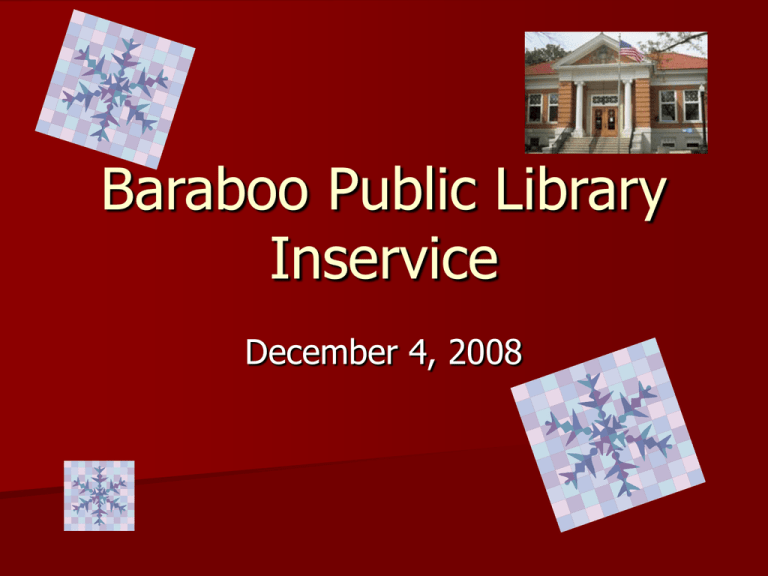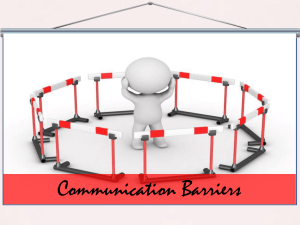communication
advertisement

Baraboo Public Library Inservice December 4, 2008 ’Scuse Me, While I Kiss This Guy Communication Matters! AGENDA Getting Started Communication Process Communication Styles Communication Methods Conflict Wrap up What is Communication? Information Sender Receiver Medium Why is it important? Living Working Relationships Disaster Internal Communication Teamwork Trust Relationships “Home is where the heart is” Communication Process Sender has idea Sender transmits Channel message Receiver sends feedback Receiver gets message Receiver understands message Receiver is affected by message Body Language 7% words 38% tone 55% body language Albert Mehrabian, 1971 Communication Styles HS Sociability Dominance Sociability LD HD Dominance Continuums LS Communication Styles HS Emotive Supportive LD HD Reflective Director LS Emotive (HS + HD) Expressive Excitable Social Informal Emotional Spontaneous Emotive Appears active, restless Takes social initiative Encourages informality Expresses emotional opinions Anybody you know? Examples Director (HD + LS) Frank Demanding Aggressive Very determined Direct Serious Director Focused More comfortable talking than listening Serious, businesslike, impersonal Strong opinions Likes to control Anybody you know? Examples Reflective (LD + LS) Precise Deliberate Cautious Serious Questioning Reflective Controls emotions Orderly Measured opinions Formal Anybody you know? Examples Supportive (LD + HS) Reserved Patient Sensitive Relaxed Passive Warm Supportive Appears quiet, reserved Listens attentively Avoids use of power Thoughtful decisions Anybody you know? Examples Communication styles Beware of labels Beware of bias Pros and cons of each style Develop flexibility Communication Tips Empathize Positive Listen Interpret Share Trust Connection Communication Medium Help receiver distinguish: – Important or Urgent – Trivial or Irrelevant Burden is on Sender Choose correct medium for message Communication Medium Face to Face Telephone Meeting Email Letter / Memo Manual Web page, blog, wiki Bulletin Board Considerations Repetition Timing Need for acknowledgement Communication Methods Downward Downward and Upward Horizontal Diagonal Downward Bureaucratic Down chain of command Efficient, fast, easy No way to verify Downward When to use: Simple messages General info Action from receiver not required Downward and Upward “Two way” Information flows in both directions Receivers chance to verify message Chance to express opinions Some managers may block flow Downward and Upward When to use: Performance reviews, grievances Decisions that affect duties and responsibilities Suggestions for improving services Horizontal Regular department meetings Peer to peer Morale Problem solving Time Horizontal When to use: Discuss ways to improve services Don’t limit to just selected staff Diagonal Cross functional work groups Task forces Teams Most open model Time Personal agendas? Right people? Diagonal When to use: Decision will have significant effect Conflict Open communication Air feelings, opinions OR Driven underground Resentment Fury Conflict and Communication Be specific Don’t get involved in other’s conflicts Depersonalize Listen, paraphrase “Take it outside.” Limit complaints It’s not all about you. “11 Communication Tips for a Healthy Workplace” MedicineNet.com FISH! Play Make their day Be there Choose your attitude www.charthouse.com Kiss the Sky! Process Body language Styles Which medium when? Methods Conflict Practice! Closing Stories Humor Lessons learned Questions? Cheryl Becker 608-246-7973 cbecker@scls.lib.wi.us





